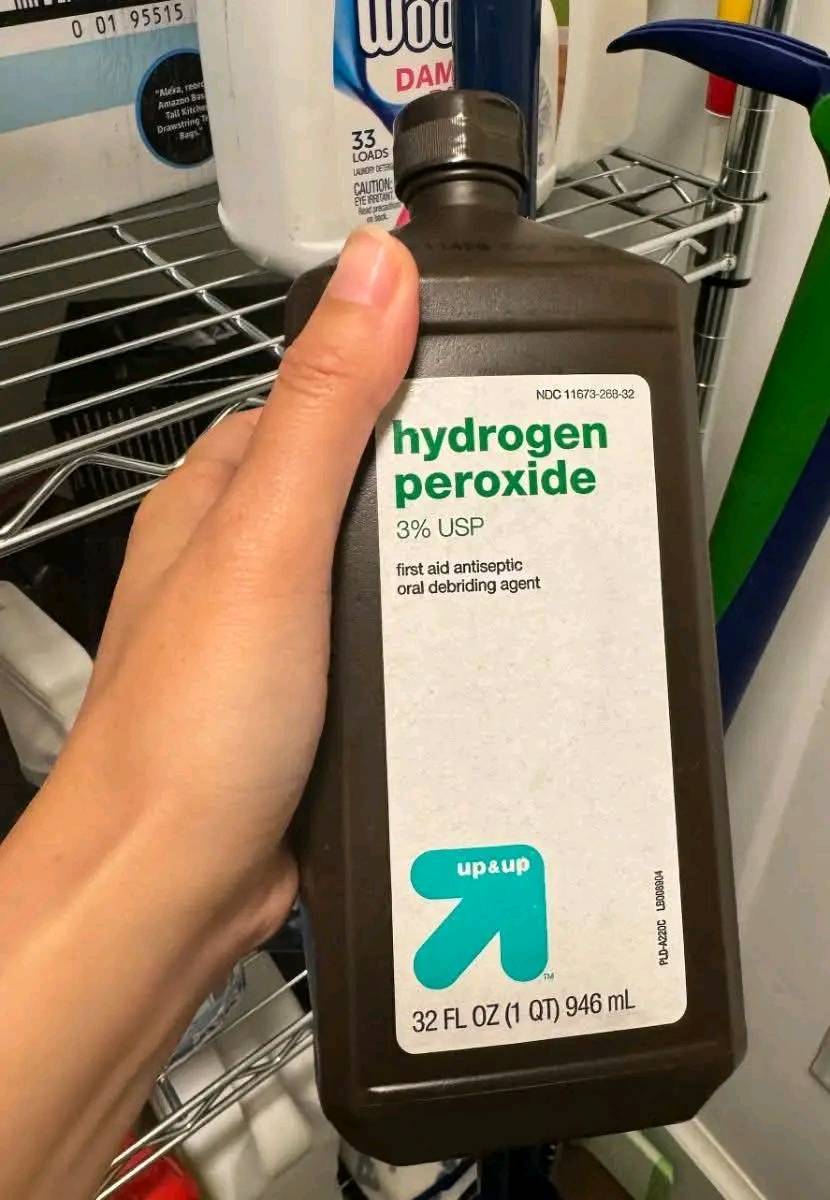ADVERTISEMENT
**Lots of People Use Hydrogen Peroxide Around the House, But These Are Some Things It Should Never Be Used For**
Hydrogen peroxide, commonly known for its use as a disinfectant and cleaning agent, has become a go-to solution for many people looking for an all-purpose cleaner. Whether used for cleaning surfaces, disinfecting cuts, or even whitening laundry, this versatile compound can seem like the perfect solution to a wide array of household tasks. Hydrogen peroxide is a chemical compound with the formula H2O2, consisting of two hydrogen atoms and two oxygen atoms. While it’s naturally occurring in small amounts, it’s often found in concentrated forms around the house in a diluted 3% solution. The compound is often touted for its antibacterial, antifungal, and antiviral properties, making it an essential item in many households.
However, as much as hydrogen peroxide is praised for its usefulness, it also comes with limitations. While it’s an excellent cleaner in many cases, it is not suitable for every application. There are a variety of household situations where hydrogen peroxide can cause harm, be ineffective, or even make the problem worse. In this article, we’ll explore the situations in which hydrogen peroxide should *never* be used and provide better alternatives.
### **What Is Hydrogen Peroxide and Why Is It So Popular?**
Hydrogen peroxide is a chemical compound with one extra oxygen molecule compared to water. The chemical formula H2O2 gives it its unique characteristics, which make it reactive in different ways. This compound is often sold in low concentrations for household use and can be a very effective cleaner, disinfectant, and mild bleach.
– **Antiseptic Properties**: Hydrogen peroxide is known for its antiseptic properties, which is why it’s often used for disinfecting cuts and wounds.
– **Cleaning Agent**: It is also a popular household cleaner due to its ability to kill bacteria, mold, and mildew.
– **Whitening and Stain Removal**: Hydrogen peroxide is effective at removing stains from white fabrics and brightening laundry.
– **Deodorizing**: It can also neutralize odors, making it useful in shoes, refrigerators, and trash bins.
The broad range of potential uses has led people to rely on hydrogen peroxide for everything from cleaning their kitchen to sanitizing their personal items. However, just because something works in one context doesn’t mean it will work universally.
### **What Are the Potential Dangers of Hydrogen Peroxide?**
Although hydrogen peroxide can be a fantastic solution for many cleaning and health-related tasks, there are significant risks when it is used incorrectly or on the wrong materials. Here are some of the dangers that could arise:
– **Damage to Surfaces**: Hydrogen peroxide is a bleaching agent, which means it can cause damage to certain surfaces like colored fabrics, wood, and natural stone.
– **Skin Irritation**: It can irritate the skin if used in high concentrations or on sensitive areas of the body.
– **Damage to the Eyes**: Hydrogen peroxide can cause burns or irritation if it comes in contact with the eyes, and it should be handled with care.
– **Harm to Health**: If ingested or used improperly, hydrogen peroxide can be harmful to your health, causing nausea, abdominal pain, or even more severe symptoms depending on the concentration.
Understanding these risks will help you make better decisions when using hydrogen peroxide and help avoid making mistakes that could lead to permanent damage or health problems.
### **Things You Should Never Use Hydrogen Peroxide For**
While hydrogen peroxide can certainly be a beneficial tool in your household, here are some important things you should avoid using it for:
—
### **1. Cleaning Colored Fabrics**
Hydrogen peroxide is a bleaching agent, which means it can cause damage to colored fabrics. Even a small amount of hydrogen peroxide can lead to discoloration or fading on clothes, carpets, and other textiles. The chemicals in hydrogen peroxide can break down the dyes in fabric, leaving unsightly patches of discoloration.
**Alternatives**:
For stain removal on colored fabrics, you should use oxygen bleach or enzymatic cleaners that are specifically designed to be color-safe. Always do a patch test on a small, inconspicuous area before using any cleaner on colored fabrics.
For Complete Cooking STEPS Please Head On Over To Next Page Or Open button (>) and don’t forget to SHARE with your Facebook friends
ADVERTISEMENT
ADVERTISEMENT
